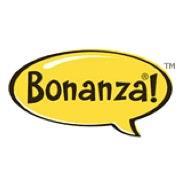
When the Russian edition of Forbes magazine published a survey of the country’s top 50 brands in March, banana brand Bonanza was notable for being the only fruit and vegetable product on the list. For Bonanza’s creator, leading importer JFC, the brand’s place in Forbes’ survey was testament to the success that it had achieved in becoming established as a fixture in Russian society in under a decade.
The roots of Bonanza’s development can be traced back to 1997, when it was created by the St Petersburg-based importer as a trademark, although it was still a long way from being a fully-fledged brand. As JFC’s Andrew Semenov explains, for the first few years of its life, Bonanza was “just an ordinary trademark”, which was scarcely distinguishable from the many others present in the Russian market.
However, in 2004 the company began discussing the possibilities and gains in the market that could be achieved by converting Bonanza into a brand. The following year, JFC decided to move ahead with the proposal and hired the Moscow branch of international advertising agency BBDO to create a marketing campaign for Bonanza. The company also engaged the services of Russian brand identity specialist WPF Depot to create a new identity and logo for the embryonic marque.
Following numerous meetings, Mr Semenov says the company created the distinctive speech bubble design for Bonanza that is still used as its logo to this day. The campaign and brand were offically launched in January 2006 with a television advertising campaign, devised by BBDO, and a new brand website and internet publicity drive, which were overseen by a local advertising agency in St Petersburg.
According to Mr Semenov, this campaign achieved its intended effect and by April of that year, he says the Bonanza brand was becoming well-known among Russian consumers and was reaching “quite high levels” of brand recognition.
All of these efforts, he continues, were combined with JFC’s work with its suppliers and own locations in Ecuador that were aimed at improving product quality.
“We looked at the packaging and continued on to the whole production cycle, with the result that there is now a widespread opinion on the Russian market that Bonanza bananas offer a different quality to all the other bananas on the market,” explains Mr Semenov. “We have found that Russian consumers are willing to pay a premium price for better quality.”
The higher price has also assisted JFC in recouping the US$6m that it invested in the advertising and marketing campaign to launch the brand over the course of three years.
Mr Semenov says the success of Bonanza also helped the company achieve the initial objectives behind the project – to find a means of marketing premium quality fruit in Russia and to provide some distance from “continual banana price wars”.
Of course, the global economic recession somewhat slowed Bonanza’s expansion and caused JFC to withdraw its advertising plans for the 2008/09 campaign. But, although Mr Semenov says the group may return to these plans later this year, he says the extent of Bonanza’s brand awareness means that such actions are not currently essential.
As well as the Forbes study, in which Bonanza rose to 31st position, the brand scored highly in a recent survey of banana tradenames in its domestic market. Mr Semenov says the survey, which was carried out by leading analyst TNS Russia in 11 of the country’s largest cities with populations over 1m, found that Bonanza was not just the best-known brand in the market, but was also the only brand known to, and indeed remembered, by banana consumers.



